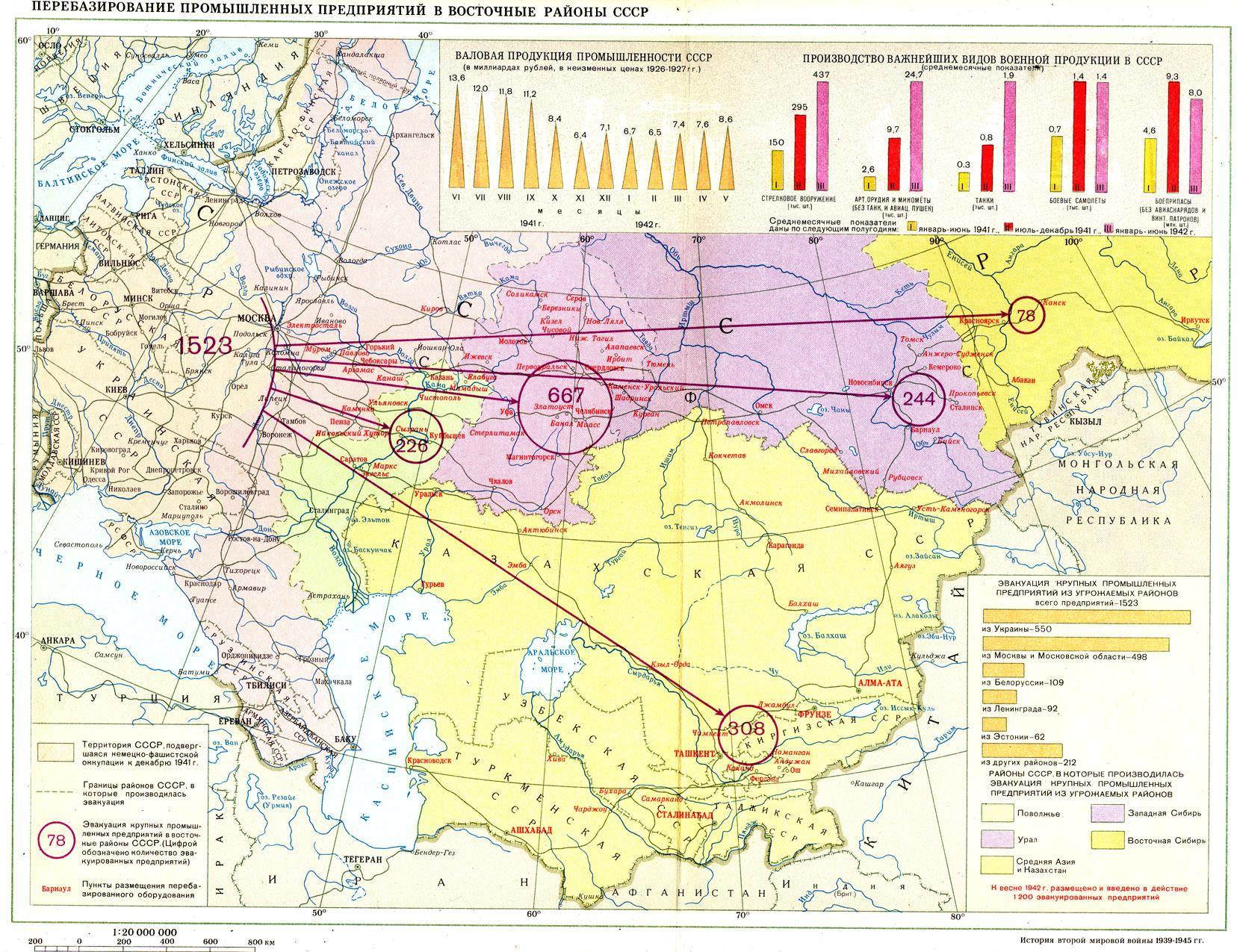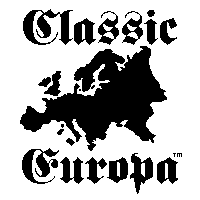Map


This map (without the overlay) is available on many web pages on the Internet. The pages I've examined do not cite the source of the map, but I believe it likley from Istoriya Vtoroy Mirovoy Voyny 1939-1945 gg. (History of the Second World War 1939-1945), a twelve-volume Soviet work published in 1973-1985. If correct, this means the map may still be copyrighted, and it is used here only for the purposes of review and commentary.
The overlay is my work, providing English-language guidance to the map.
Review and Commentary
The map covers Soviet industrial evacuations in 1941, after Germany invaded the USSR on 22 June 1941. Overall, the map summarizes these evacuations well, but it is a bit confusing in places. The following text is my review and commentary on the map, which makes the map more understandable in English.
The "1523" number on the map is for what the Soviets called LARGE INDUSTRIAL ENTERPRISES. "Enterprises" was a Soviet term for state-owned economic entities, as the USSR did not have privately-owned companies of any significance. The 1523 figure actually represents only a fraction of the enterprises the Soviets evacuated in 1941, as many non-industrial and small industrial enterprises were also evacuated. The map and the 1523 figure only apply to the 1941 evacuations; many more enterprises were evacuated in 1942 to escape the German 1942 offensives.
The phrase "to the Eastern Regions of the USSR" is very important for understanding the map. In the early weeks of the invasion, enterprises were evacuated from the westernmost regions of the USSR to other places still in the western USSR, particularly the Leningrad and Moskva regions. These are not counted as part of the Eastern Regions, and the map does not show these "western" evacuations at all.
The Soviets at the time thought these western evacuation regions would be safe, as their 1941 defense plan envisioned the Red Army would halt the invaders well west of places like Leningrad and Moskva. The German advance could not be stopped until Leningrad was surrounded and Moskva itself was threatened. This almost certainly meant many of the enterprises evacuated to western locations were evacuated again. It is also possible that some enterprises evacuated to Leningrad/Moskva were not chosen to be evacuated again, as there were huge numbers of crucial enterprises already at Leningrad/Moskva that also needed to be evacuated.
Some industry was evacuated to Stalingrad in 1941. However, the map does not show Stalingrad as an evacuation destination (the red text cities). Possibly this is because Stalingrad had to be evacuated in 1942. More likely, Stalingrad is not defined to be in the "Eastern Regions". Other relocation destination that do not happen to be in the Eastern Regions are also ignored. For example, I believe some enterprises were evacuated south to the Transcaucasus region, such as to Tbilisi. Note that Tbilisi also is not marked in red and so is not part of the Eastern Regions.
The areas from which enterprises were evacuated are not clearly delineated. Voronezh for example had its major industries evacuated in the autumn of 1941 once the German advance came close enough to the city. From how how the map is drawn, you might think Voronezh was outside the zone being evacuated! (At least I did, which is why I did not trust the map at first.)
The Military Production section on the map has an "Artillery and Mortars" chart. This category explicitly excludes tank guns and aircraft guns. It is unclear if "Mortars" includes rocket artillery launchers (which the wartime Soviets called "Guards mortars") or is just for conventional mortars. Even for conventional mortars, it is very likely that the almost-useless 37-mm "spade mortar" is not included in the production chart, as the Soviets sensibly almost always excluded this weapon from their statistics. Also be aware the big increase in production for artillery and mortars in July-December 1941 was mostly due to mortar production, as it was relatively easy to put 50-mm and 82-mm mortars into production.
